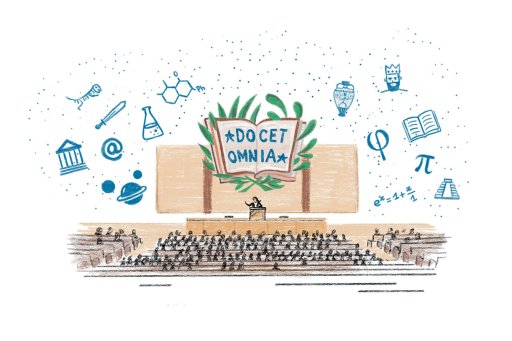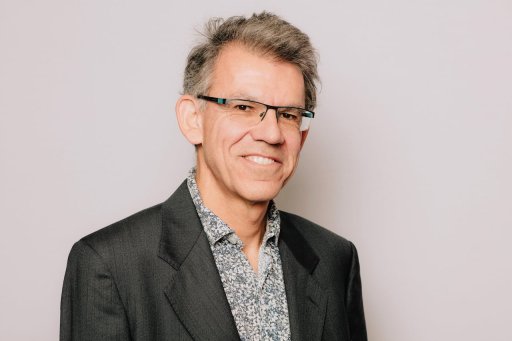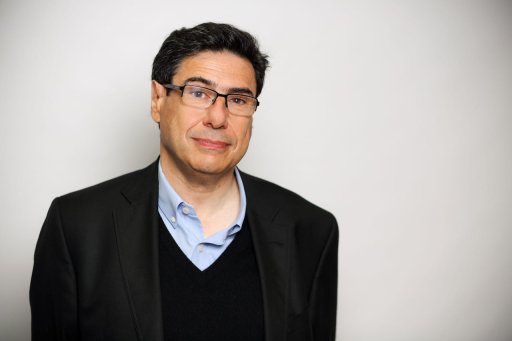François-Marie Bréon is a climate physicist at CEA's Laboratoire des Sciences du Climat et de l'Environnement, specializing in the use of space observations to understand and monitor climate processes. The space-based instruments he helped develop have provided major insights into the impact of aerosols on clouds, and the Earth's radiation balance.
For 2024-2025, he has been invited to hold the Avenir Commun Durable Annual Chair, supported by the Collège de France Foundation and its major sponsors Covéa and TotalEnergies.
It's the early 1990s, and a subject that is now on everyone's lips is already well established in climatology laboratories. Gradually, and in the wake of suspicions and scientific debates that had been brewing since the 1960s, it was becoming clear that the increase in greenhouse gases in the atmosphere, caused by human activity, was having an impact on the earth's climate. François-Marie Bréon, a former student at the École Normale Supérieure with a passion for space technology, had just completed his doctorate in climatology. After working on the use of satellite observations to measure temperature and humidity profiles in the atmosphere, he wasn't quite sure he wanted to dedicate his career to research. But, while doing his post-doctorate at the University of California, San Diego, in the USA, he realized something : " global warming was going to be a major topic in the years to come, and I wanted to make my contribution to its study ", he recalls.
And his expertise, at the intersection of climatology and satellite technology, lends itself particularly well to this task. Indeed, very early on in the 1960s, the first satellites dedicated to observing the Earth were launched, and a large number of them collected data enabling weather forecasts to be made. Thanks to the accumulation of this data, scientists were able to begin tracking the evolution of the climate and better understand its processes. Then, in the lecture 1980s, the first space observation missions were launched, fully dedicated to understanding climatic phenomena. We really started to take an interest in energy exchanges between the Sun, the Earth and space," explains François-Marie Bréon. We want to know how much of the Sun's radiation is absorbed by the Earth, and how much infrared energy our planet sends back into space, depending on the presence or absence of clouds, etc. ". The study of climate and satellite observations thus became inseparable.
The trials and tribulations of space observation
Encouraged by this new vocation, he joined a program run by the Centre national d'études spatiales (CNES) to develop a new measuring instrument, dubbed POLDER(POLarization and Directionality of the Earth's Reflectances). Its mission : to measure the polarization of solar radiation reflected by the Earth, enabling analysis of the properties of clouds and aerosols in the atmosphere, among other things. The instrument was installed on the ADEOS-1(Advanced Earth Observing Satellite-1) satellite of Japan's National Space Development Agency, and was launched into orbit on August 17 1996, in what was the first ever Franco-Nipponese space collaboration. Scientists had high hopes for the mission, which was scheduled to last five years. Alas, ADEOS-1's solar panel failed after just ten months, and the instruments it houses stopped working. "Itwas a big shock," says François-Marie Bréon. But the team was undeterred, and we launched a second, identical instrument into orbit on ADEOS-2 on December 14, 2002. " This second attempt suffered the same misfortune, however, as less than a year later another failure affected the satellite's solar panel, bringing the mission to an early end.
At the same time, CNES, which until then had been working with large satellites weighing several tons, was beginning to develop a series of smaller craft, weighing between 100 and 200 kilograms, which could be flown as secondary passengers with larger satellites. One of these microsatellites, PARASOL (Polarisation et Anisotropie des Réflectances au sommet de l'Atmosphère, couplées avec un Satellite d'Observation portant un Lidar), carrying the POLDER instrument, was launched into orbit on December 18 2004 by an ARIANE 5 launcher. It then went on to operate for seven fruitful years, against a planned lifetime of two years. In space observation, there are sometimes hard times, like the repeated failures we've experienced, and even launch failures, which happen about one time in ten and make us lose everything," notes François-Marie Bréon. And sometimes there are pleasant surprises, as was the case with PARASOL. "
The impact of aerosols on clouds
These seven years of measurements have enabled us to study aerosols in depth, i.e. all the solid or liquid, mineral or organic particles suspended in the atmosphere. Aerosols play an essential role in climate, helping to cool it by reflecting part of the sun's light in all directions, including towards space." Today, it is thought that anthropogenic aerosols compensate for around half of the global warming caused by greenhouse gases ", stresses the climatologist. It is therefore important to quantify them and characterize their size and chemical composition, distinguishing in particular between their origin, whether natural (desert dust, sea salt, volcanic eruptions, etc.) or anthropogenic (industry, agriculture, automobile traffic, etc.)
" One of the exciting aspects of this mission, as is always the case in science, is that our measurements delivered results that we hadn't anticipated ", says François-Marie Bréon. While he was working with his colleagues to characterize clouds, their altitude and the amount of water vapour in the atmosphere, POLDER's observations shed valuable light on the determination of drop size in clouds. Liquid water clouds are made up of a myriad of droplets that form around aerosols, which act as condensation nuclei. Their size, in the micrometer range, can vary according to atmospheric conditions. Our measurements have confirmed that, in a very clean atmosphere, with few particles in suspension, the vapour will concentrate on the few aerosols available, generating large droplets," explains François-Marie Bréon. Conversely, in a polluted atmosphere, the steam will distribute itself over a larger quantity of aerosols, generating many small drops. " While this effect had been theorized before, the POLDER measuring instrument demonstrated it for the first time under natural conditions, thanks in particular to an algorithm developed by François-Marie Bréon that enables the size of water droplets to be measured precisely from POLDER observations." This process has a significant climatic impact, as clouds made up of smaller droplets are more reflective than others. "
Two experts are better than one
In addition to cloud reflectance, the French climatologist has also worked to better understand surfaces that reflect solar radiation heterogeneously, i.e. that do not reflect exactly the same in all directions. With this in mind, he has developed tools to quantify this phenomenon of " directionality " according to biomes - deserts, grasslands, forests, etc. - which in turn enables more quantitative interpretations to be drawn from spatial observations. Another very satisfying moment in François-Marie Bréon's career was the correction of this very important directional effect." We obtain much cleaner, less noisy time series of observations, so we can look for finer effects, with smaller amplitudes. " Thanks to this tool, methods have been developed to detect when vegetation starts to grow at the end of winter. While this date can vary by a few days or weeks from one year to the next, depending on weather conditions, the time series of very precise observations have enabled us to identify a " climate signal " which shows a very clear trend : global warming is causing plant growth to start earlier and earlier in the year.
This work, like many of his other contributions, illustrates the researcher's dual role. Although he considers himself to be a climatologist, François-Marie Bréon has devoted a large part of his career to specializing in space observation, and developing instruments and algorithms that enable satellites to be used more effectively to study the climate. How can be optimized? What are the uncertainties ? How can we develop a device that can measure data of real use ? These are just some of the crucial questions he has tackled throughout his career, in a context where understanding climate processes has become increasingly important every year, as their disruption continues to grow.
A committed career
Over the past fifteen years, François-Marie Bréon has turned his attention to another major climate process : the carbon cycle." The quantities ofCO2 , the main greenhouse gas implicated in the current climate crisis, are traditionally measured on the ground from a few stations around the world, so we wanted to develop a satellite to produce global observations ", he explains. He proposed the concept, which was not accepted until rather late, in the run-up to COP21 in Paris, in 2015." Today, vegetation and oceans absorb the equivalent of half of man-madeCO2 emissions, which amount to 40 billion tonnes per year, but we still have some uncertainties about the location of these carbon sinks and their fate. " The MicroCarb satellite, due for launch in 2025, will have to resolve these uncertainties, by measuring the natural carbon cycle, and mapping its sources and sinks.
Throughout his career, François-Marie Bréon has been a fervent protagonist in the fight against global warming. While his work sheds light on the inner workings of this issue, he has also been heavily involved in public debate and the popularization of the subject. He lent his pen to the writing of one of the chapters of the 5th report of the Intergovernmental Panel on Climate Change, and has long been a regular speaker to associations across France." I've always enjoyed talking to the general public about science, but I soon wanted to address a wider audience ", he confides. He joined the Association française pour l'information scientifique (AFIS), which he chaired for several years, and contributes regularly to its magazine, each issue of which reaches around ten thousand readers. He is also deeply involved in the fight against climate scepticism, which he deplores, and is keen to raise his voice against misinformation about potential solutions to the climate crisis. While he welcomes his appointment to the Avenir Commun Durable Annual Chair for the year 2024-2025 with great humility, he welcomes the opportunity to be, once again, a spokesperson for the climate cause, and to explain clearly how we know what we know.
Article by William Rowe-Pirra, journalist










